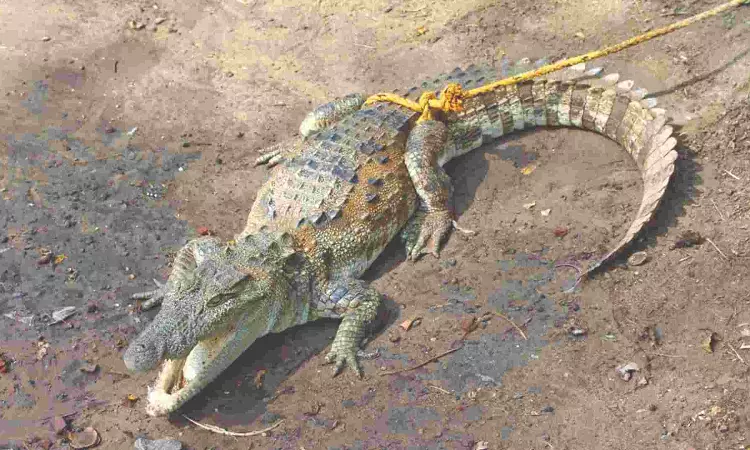Govt proposes habitat study of crocodiles in Kollidam river
According to the department document, the Anaikarai region in the Kumbakonam Range of Thanjavur Forest Division houses the most significant habitat of mugger crocodiles (Crocodylus palustris) in Tamil Nadu. Located along the Kollidam River, Anaikarai also borders the districts of Ariyalur and Cuddalore where mugger habitats are present.

The crocodile captured in Anaikarai near Kumbakonam on Saturday
CHENNAI: To mitigate human-crocodile conflict and to maintain the population of mugger crocodiles in the Kollidam River, the State Forest Department has decided to conduct a habitat study of the species in the river besides their movements.
The move comes against the backdrop of the establishment of a Crocodile Conservation Centre at Anaikarai on the banks of the river.
According to the department document, the Anaikarai region in the Kumbakonam Range of Thanjavur Forest Division houses the most significant habitat of mugger crocodiles (Crocodylus palustris) in Tamil Nadu. Located along the Kollidam River, Anaikarai also borders the districts of Ariyalur and Cuddalore where mugger habitats are present.
As a part of the study, the habitat of the mugger crocodiles in Kollidam and its distributaries will be examined along with habitat suitability and conservation needs.
In addition, the department will map vulnerable points for human-crocodile conflict points. The study will be a comparative analysis of the mugger crocodile population at Anaikarai with other mugger habitats in the country.
It may be recalled that an announcement was made in the State Assembly for establishing the Conservation Centre at Rs 2.50 Crore. Following the announcement, the Environment, Climate Change, and Forests Department issued a government order on October 8 to sanction research study, DPR preparation, purchase of capture and handling equipment, and awareness. The department has also invited research institutions and organisations to bid for the study.
Endemic to India, muggers live in freshwater bodies including rivers and lakes. They lay eggs once a year during the dry season in burrows. Females protect the young ones and take care of them until they grow up to be on their own. In some cases, males are known to build the nest after courtship but they don’t engage in the protection of the young ones after hatching.



